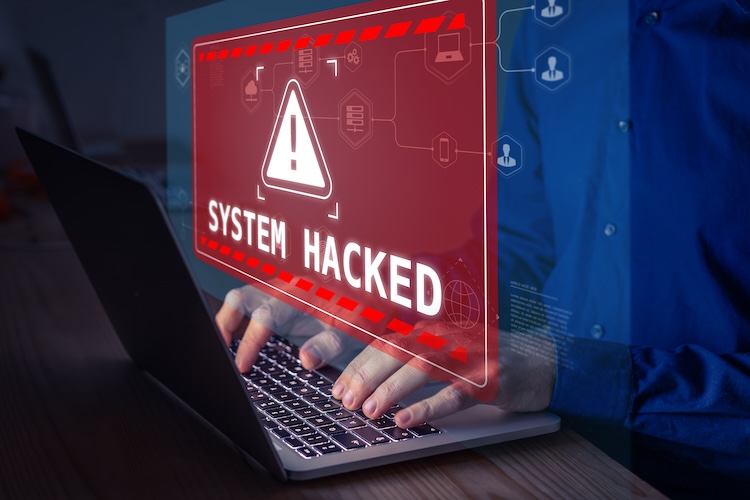In today’s digital world, cyber threats are constantly evolving and becoming more sophisticated. That’s why having a strong Security Operations Center (SOC) is not just a luxury anymore – it’s absolutely necessary for organizations that want to safeguard their digital assets and ensure uninterrupted business operations.
The Challenges of the Current Cyber Threat Landscape
The current cyber threat landscape presents unprecedented challenges:
- Sophisticated ransomware attacks targeting critical infrastructure
- Advanced persistent threats from state-sponsored actors
- Zero-day vulnerabilities exploited within hours of discovery
- Supply chain attacks compromising trusted vendors
The Importance of Incident Management in Building a Resilient SOC
Building a resilient SOC requires a strategic approach to incident management. The primary objectives include:
- Real-time threat detection and response
- Proactive threat hunting and vulnerability assessment
- Comprehensive security monitoring and analysis
- Rapid incident containment and recovery
A well-designed SOC acts as your organization’s cybersecurity command center, coordinating defense mechanisms and orchestrating responses to security incidents.
However, maintaining a strong security posture goes beyond just having a SOC. It also involves implementing best practices for business cybersecurity, such as regular security audits and employee training on recognizing threats.
Moreover, it’s crucial to think beyond traditional security measures. For instance, understanding the implications of clicking on a phishing email can significantly reduce the risk of falling victim to such scams.
Additionally, with the rise in application-related threats, adopting some app security tips can further bolster your organization’s defenses.
With cyber attacks becoming increasingly complex, your SOC’s resilience directly impacts your ability to maintain strong security posture and protect critical assets.

The Evolution and Role of SOCs in Cybersecurity The Birth of SOCs
SOCs Today
Fast forward to today, SOCs have transformed into sophisticated command centers equipped with advanced threat detection capabilities and artificial intelligence-driven security tools.
The Role of Modern SOCs
Modern SOCs serve as the nerve center of an organization’s cybersecurity infrastructure, offering benefits such as:
- 24/7 security monitoring
- Real-time surveillance of network activities and system behaviors
- Threat intelligence integration with analysis of global threat feeds and emerging attack patterns
- Incident response coordination for swift action against detected security breaches
- Data loss prevention by implementing controls to protect sensitive information
Critical Evolution in SOC Capabilities
A critical evolution in SOC capabilities lies in asset and vulnerability management. Today’s SOCs maintain detailed inventories of hardware assets, software applications, network resources, and data repositories. This comprehensive asset tracking enables:
- Rapid identification of vulnerable systems
- Prioritization of security patches
- Risk-based resource allocation
- Proactive threat mitigation
The Integrated Security Hub
In light of the latest cybersecurity trends for 2023, the modern SOC has evolved beyond simple monitoring to become an integrated security hub. By combining advanced technology with skilled analysts, SOCs now provide organizations with robust defense mechanisms against sophisticated cyber threats.
Importance of Log Management and Vulnerability Management Best Practices
Moreover, the importance of log management cannot be overstated in ensuring security and reliability of infrastructure. As we analyze 2019 cybercrime statistics, it’s evident that implementing vulnerability management best practices is essential for businesses to safeguard their digital assets effectively.
Proactive Systems Implementation for Enhanced Threat Detection
A strong Security Operations Center (SOC) uses proactive security measures to find and stop threats before they happen. These measures include real-time monitoring systems that constantly check network traffic, looking for unusual patterns and behaviors that could indicate a security breach.
Key Components of Proactive Threat Detection:
- Automated threat intelligence feeds
- Behavioral analytics engines
- Machine learning algorithms
- Security orchestration platforms
- Integrated response protocols
These systems work together to provide complete protection. When they spot something suspicious, they automatically take action – such as isolating affected systems or implementing countermeasures.
Real-World Application:
Let’s look at a practical example: a ransomware attack. In this case, our proactive systems are designed to identify abnormal file encryption patterns. Once detected, the following series of actions will be triggered automatically:
- Block the malicious process
- Isolate affected endpoints
- Alert security teams
- Initiate system restoration
- Document the incident
Modern SOCs use security orchestration to make these responses more efficient. Tools like CybriantXDR combine machine learning with human expertise to stop harmful software before it can run.
Continuous Monitoring Benefits:
Proactive systems offer several advantages through continuous monitoring:
- Reduced mean time to detect (MTTD)
- Minimized attack surface
- Enhanced threat visibility
- Automated incident documentation
- Rapid response deployment
By constantly keeping an eye on our networks, we can quickly find and address potential threats.
Adapting Defense Posture:
Proactive systems create a flexible defense strategy that adjusts to new threats. Instead of just waiting for attacks to happen and then reacting, we actively defend against cyber attacks.
However, it’s important to remember that even with advanced systems in place, the weakest link in network security is often the human element or other unexpected vulnerabilities. This means continuous training and awareness about the latest threats are crucial.
This week’s top cybersecurity headlines highlight this need for ongoing education and vigilance in the face of evolving cyber risks.
Key Challenges Facing SOCs and Strategies to Overcome Them
Modern SOCs face critical operational hurdles that can impact their effectiveness in protecting organizations against cyber threats. Let’s explore these challenges and their practical solutions:
1. Limited Visibility Into Threats
- Blind spots in network infrastructure
- Incomplete asset inventory tracking
- Shadow IT operations
- Legacy systems with poor monitoring capabilities
A robust solution involves implementing comprehensive asset discovery tools and establishing standardized visibility protocols across all network segments. Organizations can leverage automated asset management systems to maintain real-time inventory tracking.
2. Alert Management Struggles
- High volume of false positives
- Alert fatigue among analysts
- Missing critical security events
- Resource-intensive triage processes
Implementing AI-powered alert correlation tools helps prioritize threats based on risk levels. SOC teams can create custom alert rules tailored to their organization’s specific threat landscape.
3. Access to Threat Intelligence
- Limited access to quality threat feeds
- Difficulty in contextualizing threat data
- Delayed response to emerging threats
- Resource constraints for smaller organizations
Building partnerships with trusted threat intelligence providers and participating in information-sharing communities can enhance threat detection capabilities. Organizations should invest in threat intelligence platforms that integrate seamlessly with existing security tools.
4. Investigative Capabilities
- Limited forensic tools
- Lack of specialized expertise
- Time constraints during incidents
- Incomplete audit trails
Developing structured investigation playbooks and investing in automated forensic tools can streamline incident response processes. Regular training sessions help analysts maintain and upgrade their investigative skills.
Effective Monitoring Strategies and Incident Response Training for Analysts
A robust SOC requires precise monitoring strategies and well-trained analysts. Let’s dive into the essential components that make this possible.
Establishing Visibility Rules
Strong visibility rules create the foundation for effective surveillance:
- Network Segmentation – Define clear boundaries and access controls
- Asset Classification – Prioritize monitoring based on critical systems
- Data Flow Mapping – Track information movement across the infrastructure
Alert Tuning Best Practices
Alert fatigue can cripple a SOC’s effectiveness. Here’s how to optimize your alert system:
- Set baseline behavior patterns for normal operations
- Create custom rules based on your environment
- Implement machine learning algorithms to reduce false positives
- Regular review and adjustment of alert thresholds
Training Digital Investigators
Modern SOC analysts need investigative skills beyond traditional IT knowledge:
Technical Skills
- Digital forensics
- Malware analysis
- Network packet inspection
- Log analysis techniques
Investigative Mindset
- Pattern recognition
- Evidence preservation
- Incident reconstruction
- Root cause analysis
Regular tabletop exercises and simulated incident scenarios help analysts sharpen these skills in a controlled environment. This hands-on experience proves invaluable during real security incidents.
Integration of Technologies, Communication Framework, and Staffing Considerations in Building a Resilient SOC
A robust SOC infrastructure demands seamless integration of cutting-edge technologies and skilled personnel. Let’s explore the essential components that create a resilient security operations framework.
Core Technology Stack
- Security Information and Event Management (SIEM) platforms for centralized log management, such as those offered by Cybriant
- Advanced analytics solutions powered by machine learning
- Automated threat detection and response systems
- Vulnerability scanning and assessment too
- Network monitoring and packet analysis solutions
- Endpoint security technologies to defend against cyber threats
Communication Platform Integration
- Real-time incident tracking and case management systems
- Secure messaging platforms for team collaboration
- Automated alerting and escalation workflows
- Documentation and knowledge base repositories
- Integration with ticketing systems for streamlined incident handling
Building the Right Team
A successful SOC team combines technical expertise with essential soft skills:
Technical Roles
- Security analysts (Tiers 1-3)
- Threat hunters
- Forensics specialists
- Compliance experts
Soft Skills Requirements
- Critical thinking under pressure
- Clear communication abilities
- Problem-solving aptitude
- Adaptability to evolving threats
The human element remains crucial in high-pressure situations. SOC analysts must balance technical proficiency with effective communication skills to handle incidents efficiently. Regular training sessions help team members stay current with emerging threats and technology updates.
Continuous Improvement Practices, Cyber Resilience Focus, Technological Infrastructure Essentials, and Deployment Models for SOCs
Regular Incident Response Drills for Continuous Improvement
Regular incident response drills serve as the backbone of a SOC’s continuous improvement strategy. These drills simulate real-world cyber attacks, allowing teams to:
- Test response protocols under pressure
- Identify gaps in procedures
- Measure response times
- Assess team coordination
Implementing structured feedback loops transforms these drill insights into actionable improvements. A notable example comes from a financial services SOC that reduced their incident response time by 60% through systematic drill analysis and protocol refinement.
Building Cyber Resilience Through Risk Management
Risk management strategies must align with business objectives while maintaining robust security postures. Key elements include:
- Comprehensive threat assessments
- Business impact analysis
- Recovery time objectives
- Incident response procedures
Conducting a thorough cyber security risk assessment can provide valuable insights into potential vulnerabilities and help in formulating effective risk management strategies.
Technology Stack Components
A modern SOC requires an integrated technology stack built on these foundational elements:
Security Information and Event Management (SIEM)
- Real-time log analysis
- Threat correlation
- Automated alerting
Behavioral Analytics Systems
- User activity monitoring
- Anomaly detection
- Insider threat identification
Vulnerability Management Tools
- Asset discovery
- Risk assessment
- Patch management
SOC Deployment Models
Organizations can choose from three primary deployment models:
Internal SOC
- Complete control over operations
- Higher initial investment
- Requires extensive in-house expertise
Managed SOC
- Reduced operational burden
- Access to specialized expertise
- Cost-effective scaling
Hybrid Model
- Combines internal control with external expertise
- Flexible resource allocation
- Balanced cost structure
The choice between these models depends on:
- Available resources
- Security requirements
- Regulatory compliance needs
- Internal expertise levels
- Budget constraints
Each model offers unique advantages, and the selection process should involve careful evaluation of organizational needs against available resources. Small to medium-sized businesses often benefit from managed services, while larger enterprises might prefer internal or hybrid approaches for greater control over their security operations.
Conclusion
Building a resilient SOC isn’t a destination—it’s an ongoing journey that requires constant vigilance and adaptation. The cyber threat landscape shifts daily, presenting new challenges such as zero-day attacks and aggressive ransomware targeting industries, which demand innovative solutions and proactive approaches to incident management.
Your organization’s security posture relies on a SOC that can:
- Adapt to emerging threats in real-time
- Scale with your business growth
- Maintain operational excellence under pressure
- Leverage cutting-edge technologies effectively, such as AI-based endpoint security solutions that can prevent 99% of malware before it executes.
The journey to cyber resilience demands specialized knowledge, robust technologies, and proven methodologies. At Cybriant, we comprehend these obstacles and have assisted over 1,400 clients in navigating their cybersecurity journey since 2015.
Prepared to fortify your organization’s security operations? Let’s explore how Cybriant’s customized cybersecurity solutions can safeguard your business assets and enhance your incident management capabilities. Reach out to our team of experts today to commence the development of your resilient SOC.



